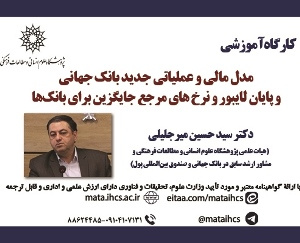مطالعه ساختار گرافیک اطلاع رسان در مصورسازی شش نگاره از کتاب البلهان (مقاله علمی وزارت علوم)
درجه علمی: نشریه علمی (وزارت علوم)
آرشیو
چکیده
گرافیک اطلاع رسان یا اینفوگرافیک، به عنوان شیوه ای نوین در بصری سازی اطلاعات، به کمک داده های علمی و توصیفات تصویری، سهم بسزایی در گسترش و توسعه علم در جوامع امروز دارد. به جهت تمایل مغز انسان به ثبت و فراخوانی اطلاعات به صورت دیداری، امروزه این شاخه از ارتباط تصویری از اقبال و محبوبیت فراوانی برخوردار است. منابع موجود در این حوزه، سرآغاز اینفوگرافیک را به کتب علمی و جغرافیایی غربی نسبت داده اند و کمتر توجهی به دستاورد غنی هنرمندان مسلمان در زمینه مصورسازی علوم و اطلاعات داشته اند. ازجمله نمونه چشمگیر این تلاش ها که بیانگر نگرش ساخت یافته هنرمند در هم آرایی هنر و علم است، کتاب "البلهان" (812 ه.ق)، کتابی در علم نجوم، طالع بینی و طلسم به قلم ابوالمعشر بلخی است. این پژوهش با بهره گیری از روش توصیفی و شیوه گردآوری اطلاعات کتابخانه ای، با هدف سنجش قواعد ساختاری اینفوگرافیک بر پیکره شش نگاره از نسخه خطی «البلهان» تدوین گشته است و به پاسخگویی این سؤال اصلی می پردازد که چگونه می توان اصول و قواعد ساختاری اینفوگرافیک را از میان داده های مصورسازی شده "البلهان" استخراج کرد؟ نتایج پژوهش حاکی از آن است که نظام های توازن، سلسله مراتب، تأکید، غلبه و ... که از اصول حاکم برگرافیک اطلاع رسان هستند، با موازین مصورسازی در این نسخه، همگام و هماهنگ است. همچنین، استخراج ویژگی هایی نظیر ارائه تصاویر دوبعدی، بازنمایی شمایل ها به صورت خطی، مینیمالیسم در بیان و پرداخت تصاویر و داده ها، استفاده از خطوط محیطی، ترکیب بندی تصاویر و نوشتار ها، استفاده از پالت رنگی محدود برای دریافت سریع اطلاعات، استفاده از نظام رمزگان شماره گذاری خاص برای جلوگیری از تعدد اطلاعات، طبقه بندی سطوح مخاطبان در نگاره ها، روایت پردازی، فونت های تیتر و سوتیتر متغیر، استفاده از موتیف های ثابت و تکرارشونده، تبعیت شمایل انسانی از نگارگری ایرانی، تعادل نظام متنی و نظام تصویری، از دیگر ویژگی های مصورسازی این نسخه ارزشمند است که در خدمت بصری سازی داده ها به کار رفته است.A Study on the Graphic Structure of Infographics, in the Illustration of Six Pictures of the Book “Al-Bulhan”
Informational graphics or infographics, as a new way of visualizing information, have a significant contribution to the spread and development of science in today’s societies. Sources in this field have attributed the beginning of infographic to Western scientific books and paid less attention to the rich achievement of Muslim artists in the field of science and information illustration. Visualization of information in a scientific way, in the past, has spread its most basic fundamentals on scientific books and resources, such as books on geography, medicine, astronomy, botany, etc., but the resources written about this branch come from graphics. the background they mention for informative graphics is mostly among ancient western texts and sources, and they have paid less attention to the rich achievements of Muslims in the field of illustrating Islamic books. One of the striking examples of these efforts, which expresses the artist’s structured attitude in all the arrangements of art and science, is the book called "Al-Bulhan", a great book on astronomy, astrology and magic by Abolmasher Balkhi. By adopting a descriptive method and through library research, this research intends to evaluate 6 drawings of Al-Bulhan from the perspective of the rules presented in an effective infographic. The results of the research indicate that the systems of balance, hierarchy, emphasis, dominance, etc. which are the governing principles of informational graphic design, are in line with the standards of illustration in this version. Achieving these results is a testament to the mastery of Muslim artists on the basics of information illustration in past ages. According to the analysis of informative graphic features in 6 manuscripts of Al-Bulhan book, features such as presenting two-dimensional images, representing icons in a linear form, minimalism in expressing and illustrating images and data, using environmental lines, combining images and texts, using palette limited color to quickly receive information, use of a special numbering code system to prevent the multiplicity of information, classification of audience levels in pictures, narration, variable title and subtitle fonts, use of fixed and repeating motifs, following human images from Iranian painting, balanced text system and image system can be extracted.



